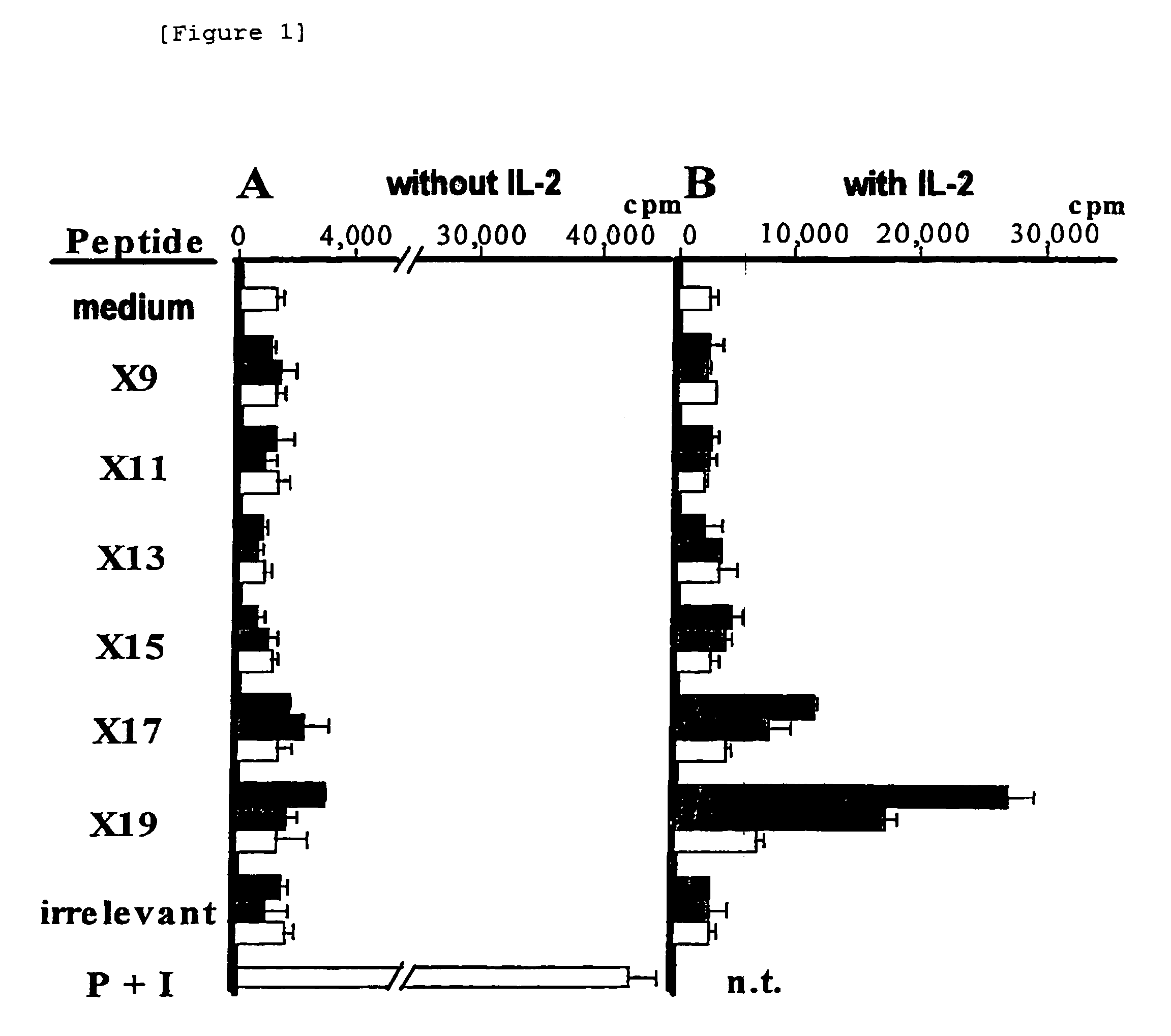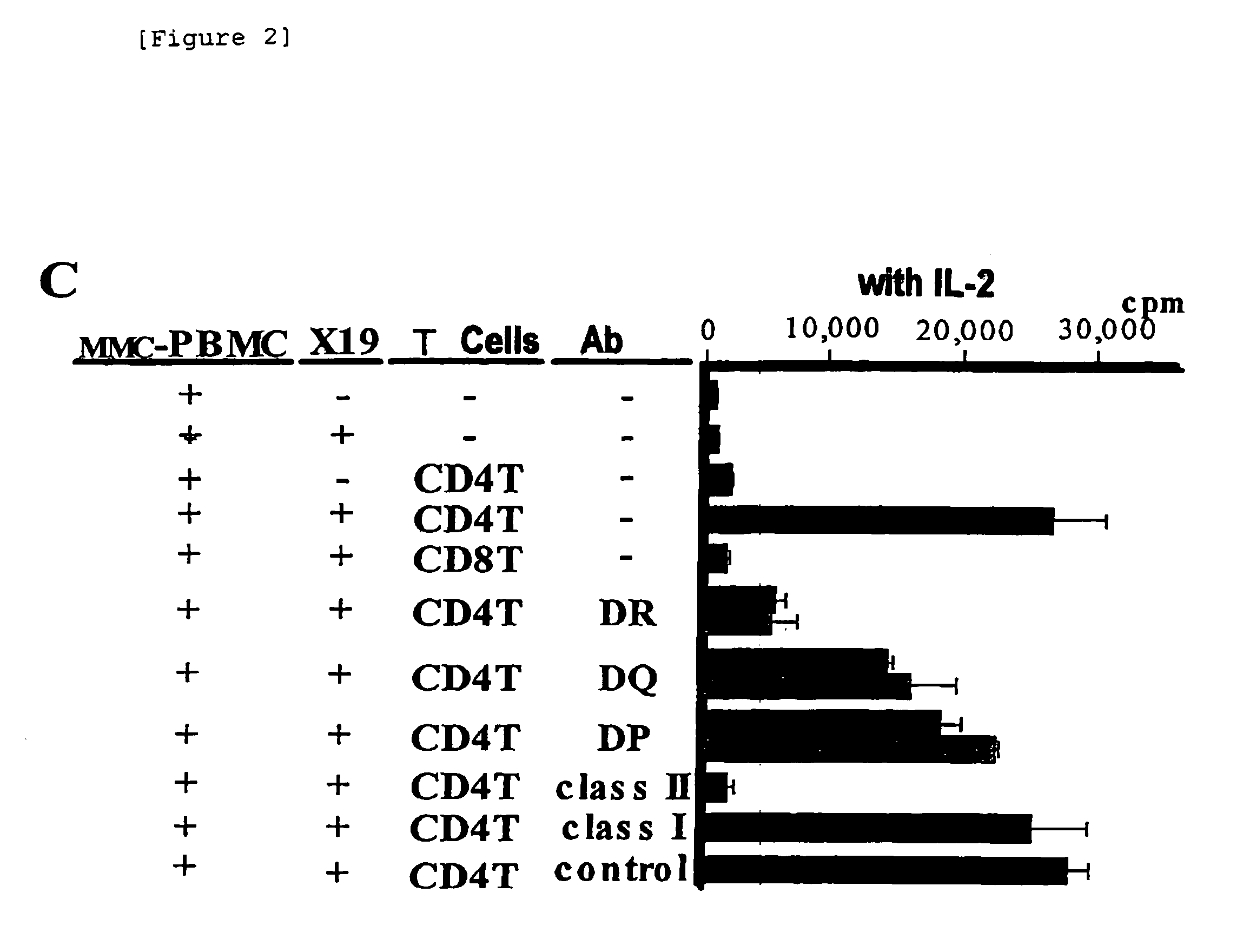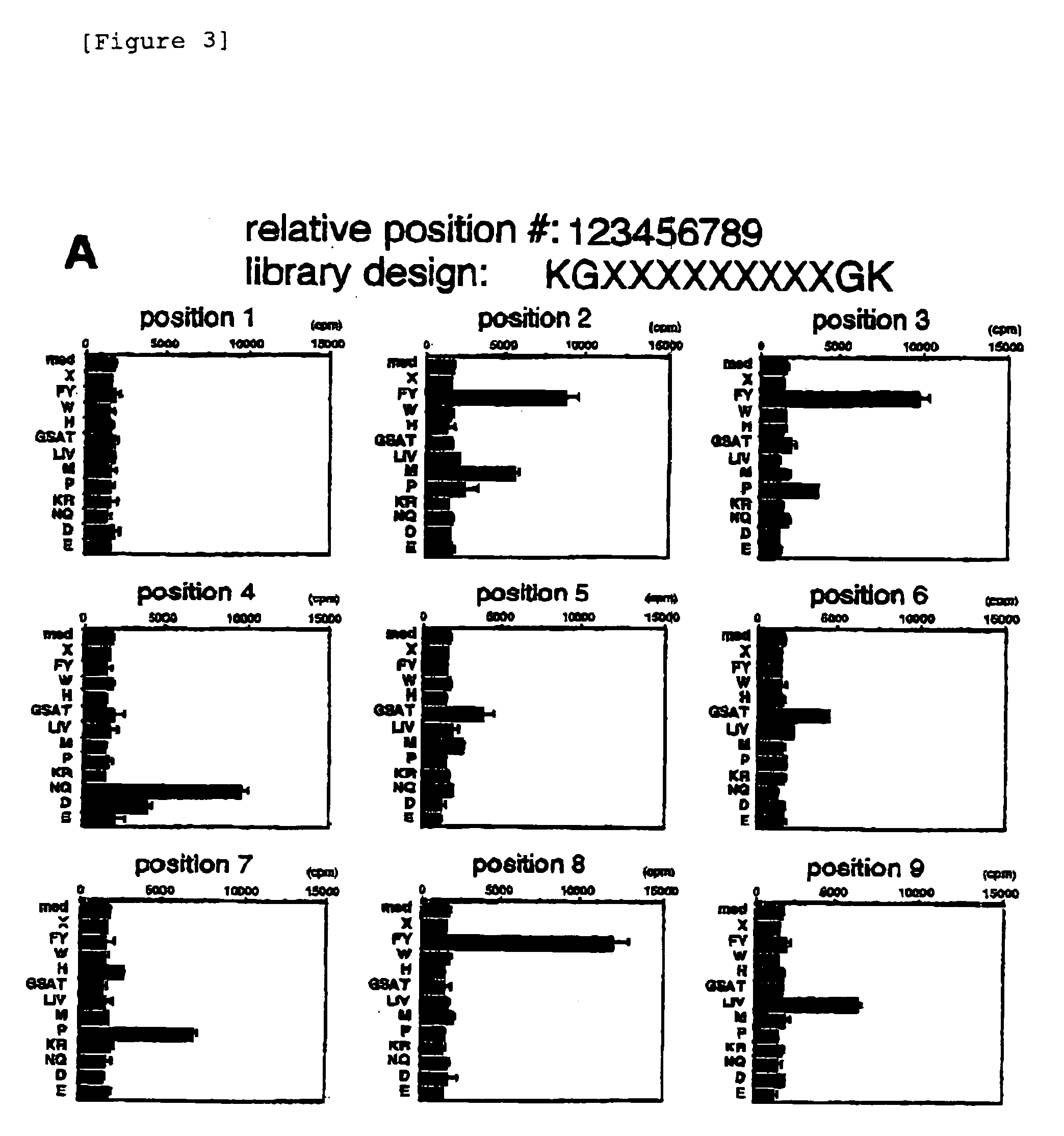Clonal expansion of T cells of unknown specificity and identification of ligand recognized by the clonally expanded T cells
a technology of t cells and clones, which is applied in the field of clonal expansion of t cells of unknown specificity and identification of ligands recognized by clonally expanded t cells, can solve the problems of inability to obtain clones per se, and inability to achieve t cell proliferation to a degree sufficient for testing
- Summary
- Abstract
- Description
- Claims
- Application Information
AI Technical Summary
Benefits of technology
Problems solved by technology
Method used
Image
Examples
example 1
[0031]X19 peptide library was prepared by the Fmoc peptide synthesis using a 96-well peptide synthesizer Model SRM96A (Shimadzu Corp., Kyoto, Japan). For randomized peptide library, an equimolar mixture of Fmoc-L-amino acids of nineteen kinds of naturally occurring amino acids other than cysteine was reacted twice for coupling for each binding site. Combinatorial randomized peptide library, upon completion of coupling reaction of amino acids, was cleaved from the resin with 2-methylindole, precipitated with ice-cooled anhydrous ethyl ether and washed five times. Precipitates of peptides were dried under nitrogen atmosphere, dissolved in trifluoroacetic acid, precipitated with ethyl ether and again dried. The prepared peptides were dissolved in 50% acetonitrile containing 0.01 N HCl, and lyophilized. After lyophilization, the weighed peptides were dissolved at 50 mM in anhydrous dimethylsulfoxide, calculating a mean molecular weight of an amino acid as 110...
example 2
[0032]The lyophilized preparation of the synthesized X19 combinatorial randomized peptide library was dissolved in 100 μL distilled water and centrifuged to remove precipitates. An amino acid composition analysis was performed for the X19 combinatorial randomized peptide library, which has previously been HCl-hydrolyzed for 21 hours, by reacting 20 μL the sample with 20 μL a reagent and 60 μL buffer, followed by HPLC of 20 μL of the reaction mixture.
[0033]The analysis proved that the peptides contained Asp+Asn 10.7 pmol (1.8%), Ser 43.0 pmol (7.2%), Glu+Gln 58.8 pmol (9.8%), Gly 68.5 pmol (11.4%), His 22.1 pmol (3.7%), Arg 5.9 pmol (1.0%), Thr 34.0 pmol (5.6%), Ala 63.5 pmol (10.5%), Pro 13.5 pmol (2.3%), Tyr 38.5 pmol (6.4%), Val 84.2 pmol (14.0%), Met 31.1 pmol (5.1%), Lys 45.9 pmol (7.6%), Ile 8.9 pmol (1.5%), Leu 66.1 pmol (11.0%), and Phe 3.8 pmol (0.7%). Thus, except for tryptophan that is not subject to analysis by this procedure, it was confirmed t...
example 3
Mitomycin C Treatment of Peripheral Blood Mononuclear Cells (PBMC)
[0035]Peripheral blood mononuclear cells (PBMC) 5 to 10×106 cells / ml were cultured in a culture medium containing 2 mM L-glutamine, 100 U / ml penicillin, 100 μg / ml streptomycin and 10% heat-inactivated self plasma in RPMI 1640 medium (Gibco, Grand Island, N.Y.), supplemented with 20 μg / ml mitomycin C (Sigma) for 2 hours while stirring. After washing twice with RPMI 1640 medium, the cells were cultured in the culture medium for additional 3 to 5 hours. The cells were recovered, and washed twice with RPMI 1640 medium for use in the subsequent study.
PUM
| Property | Measurement | Unit |
|---|---|---|
| concentration | aaaaa | aaaaa |
| concentration | aaaaa | aaaaa |
| concentration | aaaaa | aaaaa |
Abstract
Description
Claims
Application Information
 Login to View More
Login to View More - R&D
- Intellectual Property
- Life Sciences
- Materials
- Tech Scout
- Unparalleled Data Quality
- Higher Quality Content
- 60% Fewer Hallucinations
Browse by: Latest US Patents, China's latest patents, Technical Efficacy Thesaurus, Application Domain, Technology Topic, Popular Technical Reports.
© 2025 PatSnap. All rights reserved.Legal|Privacy policy|Modern Slavery Act Transparency Statement|Sitemap|About US| Contact US: help@patsnap.com



